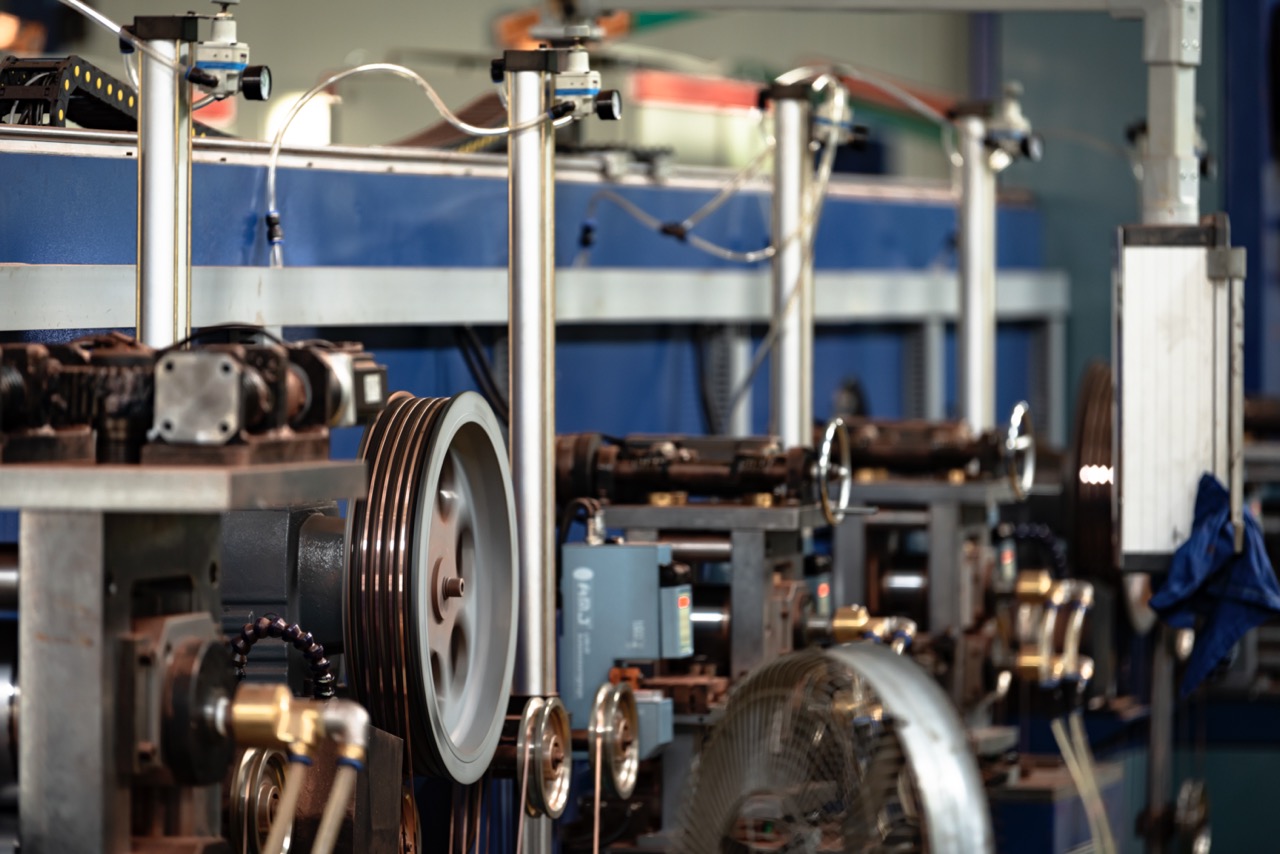Small size copper flat wireCalendering technologyIt is the core link in the manufacturing process, requiring extremely high precision control, surface treatment capabilities and plate shape control level. Compared with the processing of conventional copper strips or copper wires,Small size copper flat wire(For example, thickness 0.050.5mm, width 0.510mm) calendering technology involves more complex process coordination and equipment performance. The following is a detailed description:
1. What is calendering?
Rolling refers to the process of passing copper through a rolling mill toContinuous or multi-pass rollingThe rolling mills used for copper flat wire rolling are:
- Four-high rolling mill(Rough rolling)
- UC six-high rolling mill(Medium rolling)
- 20-roller Sendzimir rolling mill(Fine rolling, special for small size)
2. Small size copper flat wire rolling process
Copper rod/copper billet → rough rolling → cleaning and degreasing → intermediate rolling → finishing rolling → annealing → stripping → testing → packaging
3. Key points of calendering technology at each stage
1. Rough rolling (original copper billet → about 3mm)
- Use emulsion as cooling lubrication medium
- Large thickness variation, large deformation force, and high rolling mill tonnage requirements
- The goal is to shape and control the initial organizational state
2. Medium rolling (3mm → about 1mm)
- Use UC six-high mill or double-stand tandem mill
- Emulsion or rolling oil can be used (rolling oil is recommended, the finished product is good)
- Control rolling force about 300T, speed about 4~6 m/s
- Flatness (flat wire edge) control is particularly critical
3. Finish rolling (1mm → 0.05~0.5mm)
- use 20-roller Sendzimir rolling mill
- The precision requirement is extremely high, with a thickness tolerance of ±0.005mm
- Cooling uses high-quality rolling oil with a viscosity of 6~6.5 mm2/s
- Rolling speed is as fast as 6~8 m/s
- High roller surface accuracy (Ra < 0.2μm) to prevent scratches
4. Key control points of calendering process
| project | Technical points |
|---|---|
| Shape control | Tension control system + precision roll gap control (AGC system) |
| Surface treatment | The roller surface is smooth and the oil quality is stable, avoiding burrs and scratches |
| Dimensional accuracy | Real-time online control of laser thickness gauge and width gauge |
| Metallographic structure control | Multiple passes + intermediate annealing to avoid coarse grains or residual stress |
| Roll deformation control | Dynamically adjust the roller pressure to avoid thin or reverse edge thickness |
5. Differences from traditional copper strip rolling
| project | Ordinary copper strip | Small size copper flat wire |
|---|---|---|
| Thickness control | ±0.02mm | ±0.005mm or even higher |
| Width Control | ±0.1mm | ±0.02mm |
| Surface requirements | Generally no obvious scratches | Requires mirror surface, no oil spots, no scratches |
| Shape control | General Controls | Extremely high requirements (preventing lateral bending, waves, and warping) |
| Device Type | Four-roll or two-roll mill | 20-high rolling mill with online control system |
6. Typical application product specifications (example: Raytron)
| Thickness (mm) | Width (mm) Range | Tolerance control (thickness/width) |
|---|---|---|
| 0.05 | 0.5~5 | ±0.005 / ±0.02 |
| 0.1 | 0.5~8 | ±0.005 / ±0.02 |
| 0.2~0.5 | 1~10 | ±0.005 / ±0.02 |
7. Supporting equipment and technical resources (excellent manufacturers such as Ruichuang)
- High precision 20-roll rolling mill(Sendzimir style)
- Online laser thickness and width gauge
- Automatic deviation correction and constant tension system
- Online Surface AI Defect Detection System
- Independent supporting oil system (rolling oil, cleaning and degreasing agent)
- The technical team has more than 10 years of experience and has customization capabilities
